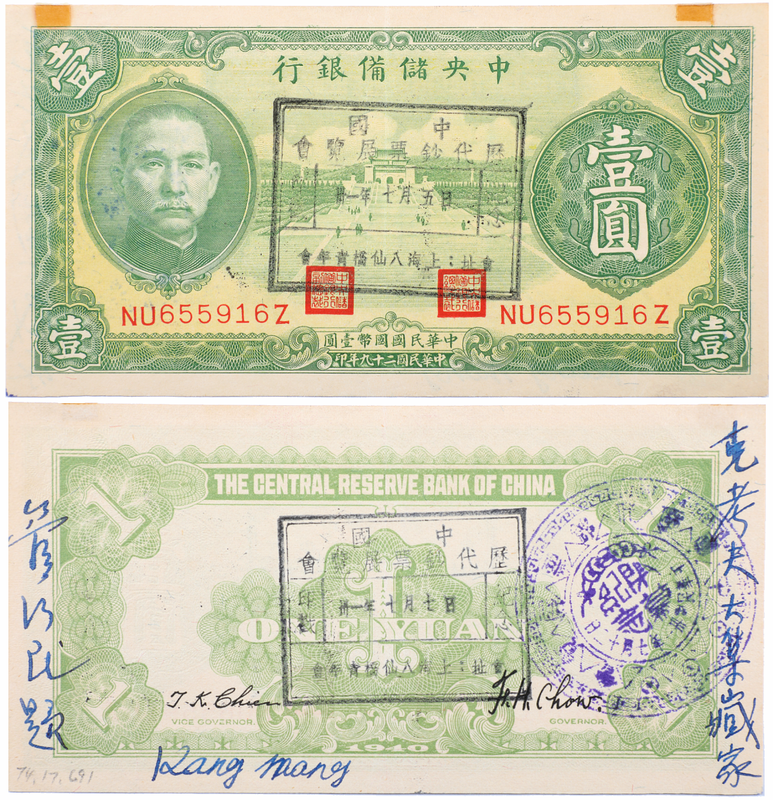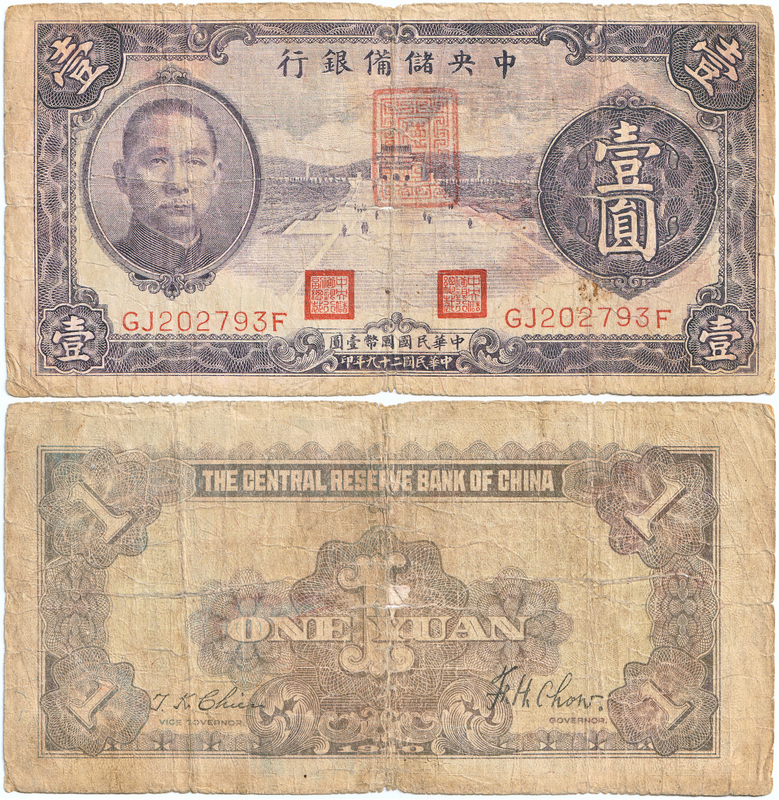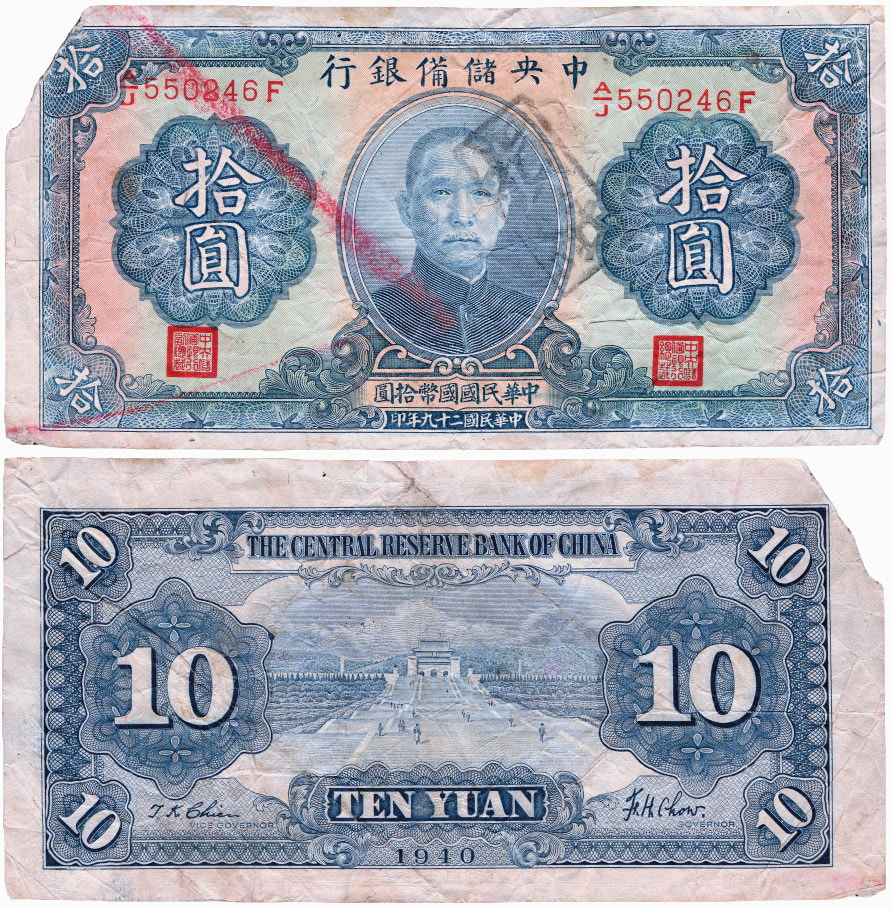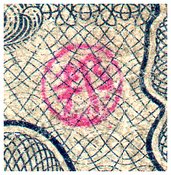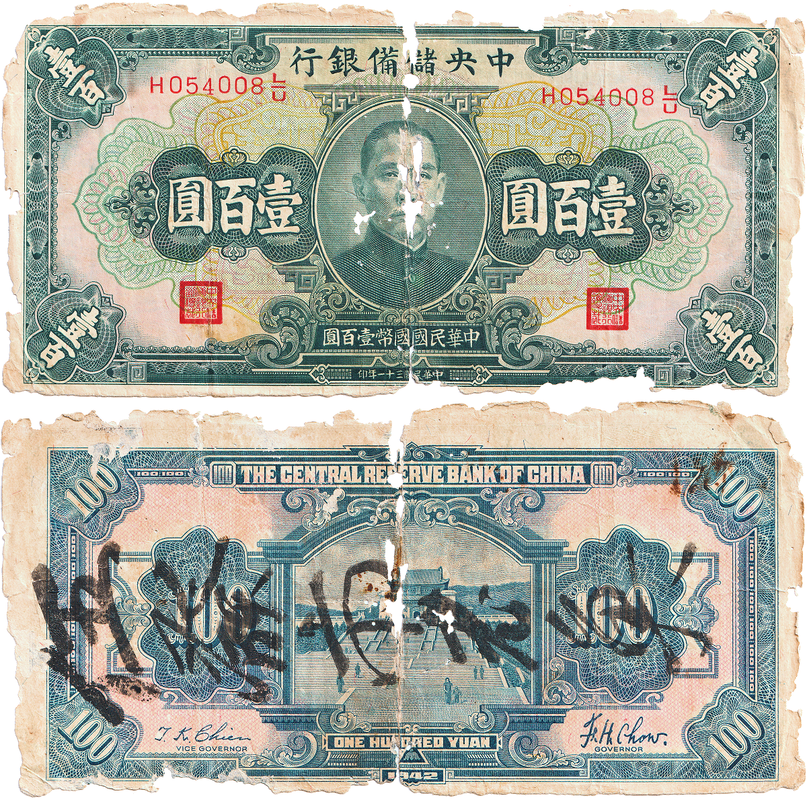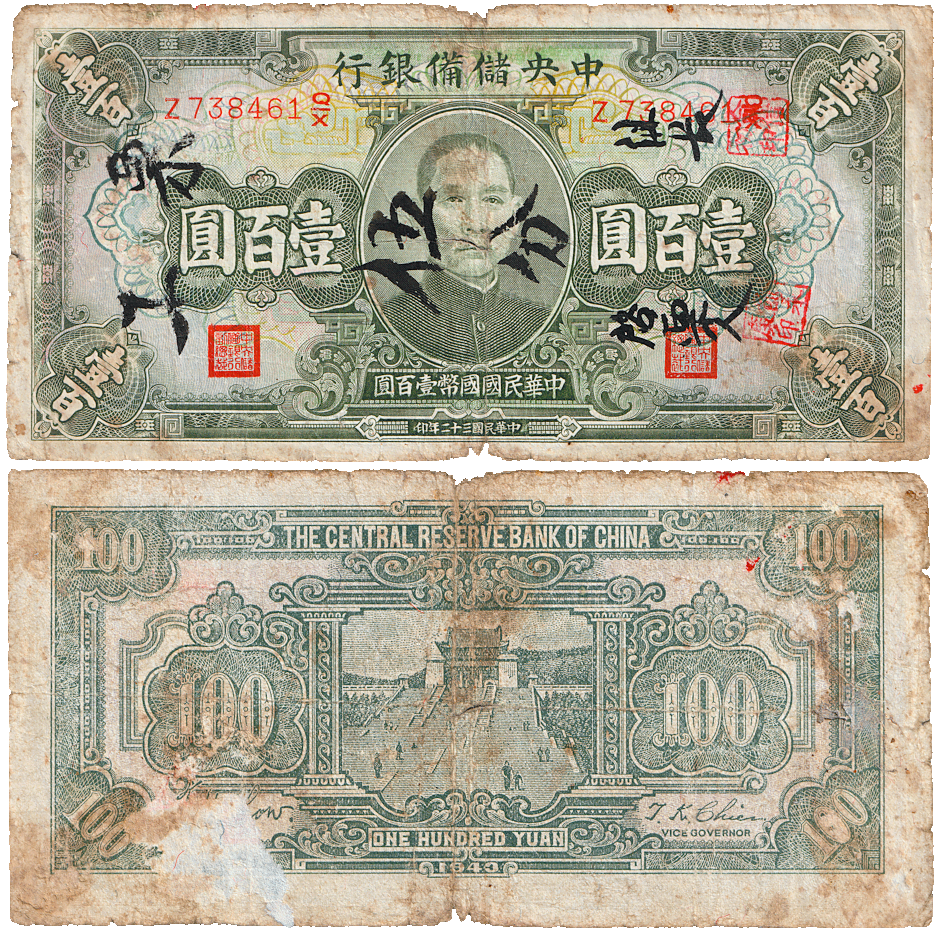|
|
June 2020
|
Script, Scrawl and Chops:
Japanese Occupation issues, Communist issues
A study of various examples of unofficial additions to paper money, usually in the form of various written scripts, signatures or chops (seals), continued.
Chops are far less common on Japanese puppet issues, and post 1930s Chinese paper money generally.
The Central Reserve Bank of China - 中央儲備銀行
|
Right: Central Reserve Bank of China 1 yuan, 1940 (1941), SCWPM J8a, S/M C297-22a. An unusual example requiring further investigation. Firstly it is unclear whether the black overstamp to both sides is of the same period or in any way related to the writing or the large circular symbol. The English annotation in the lower back margin appears to say "Kang mon(e)y". The large purple seal/symbol may well be related to good luck or good health? There are 12 characters/symbols spaced between 13 triangles (forming a star) which may be related to the Chinese zodiac. There is also a clear representation of a string of 5 cash coins which is also symbolic of good luck. This note is among the collections of the Smithsonian Institution. |
|
Right: Central Reserve Bank of China 10 yuan, 1940 (1941), SCWPM J12h, S/M C297-30a. This note appears to be an example of an official cancellation, and does appear to be a genuine issue, so presumably done after the defeat of Japan in August 1945 which resulted in the closure of the bank and the withdrawal of the currency. The front is crossed with two red streaks and marked with a two character stamp. The upper character is 捐 which can variously mean to abandon, donate, or tax. Most likely the first. The loss of the corner may also have occured when the note was cancelled. |
|
Right: Central Reserve Bank of China 100 yuan, 1942, SCWPM J14a, S/M C297-33a. A heavily insect eaten note, with a line of large characters running in a vertical format across the back. Characters include 伍-?-巿-?-? The first character is '5'. The text was presumably added after the note ceased to circulate (but before the insects - most likely termites - had their fill), and possibly has no relation to it's use as money whatsoever. |
|
Right: Central Reserve Bank of China 100 yuan, 1943, SCWPM J21, S/M C297-52. An unusual example (if genuine): in c1945 or 1948-1949 this note was apparently repurposed for use as a emergency small-change issue of some kind by a local business. Handwritten across the front in a vertical format is the business name: 泉工, followed by the new denomination of 5 cents/fen, and finally by the signatures and seals of the business owners. Some wear, especially to the 泉 character, shows that the note appears to have circulated for at least a short while in this format. 泉: (quan), spring, fountain; wealth, money 工: (gong), work; worker; skill; profession; trade; craft; labor |
The Federal Reserve Bank of China - 中国聯合準備銀行
|
Right: Federal Reserve Bank of China 10 yuan, 1945, SCWPM J86b, S/M C286-76. A well circulated note which in c1945-1946 came into the possession of an unknown Allied serviceman who was apparently posted in Tsingtao (Qingdao), Tokyo, Jinsen (Inchon, Korea), and Shanghai. The final 'Okie' might well indicate an eventual return to presumably Oklahoma? |
Communist issues (pre 1950)
|
Right: Tung Pei Bank of China 東北銀行 100 Yuan, 1947 SCWPM S3748, S/M T213-33. An unusual example of a Russian (?) overprint including the year 1950. The lower sequence of writing is presumably a stylised signature. The Tung Pei bank was based in the Northeast of China (the former Manchuria / Manchukuo) which borders Russia. Large communities of Russians lived in China, especially the Northeast (especially Harbin) until the mid 1960s. |
